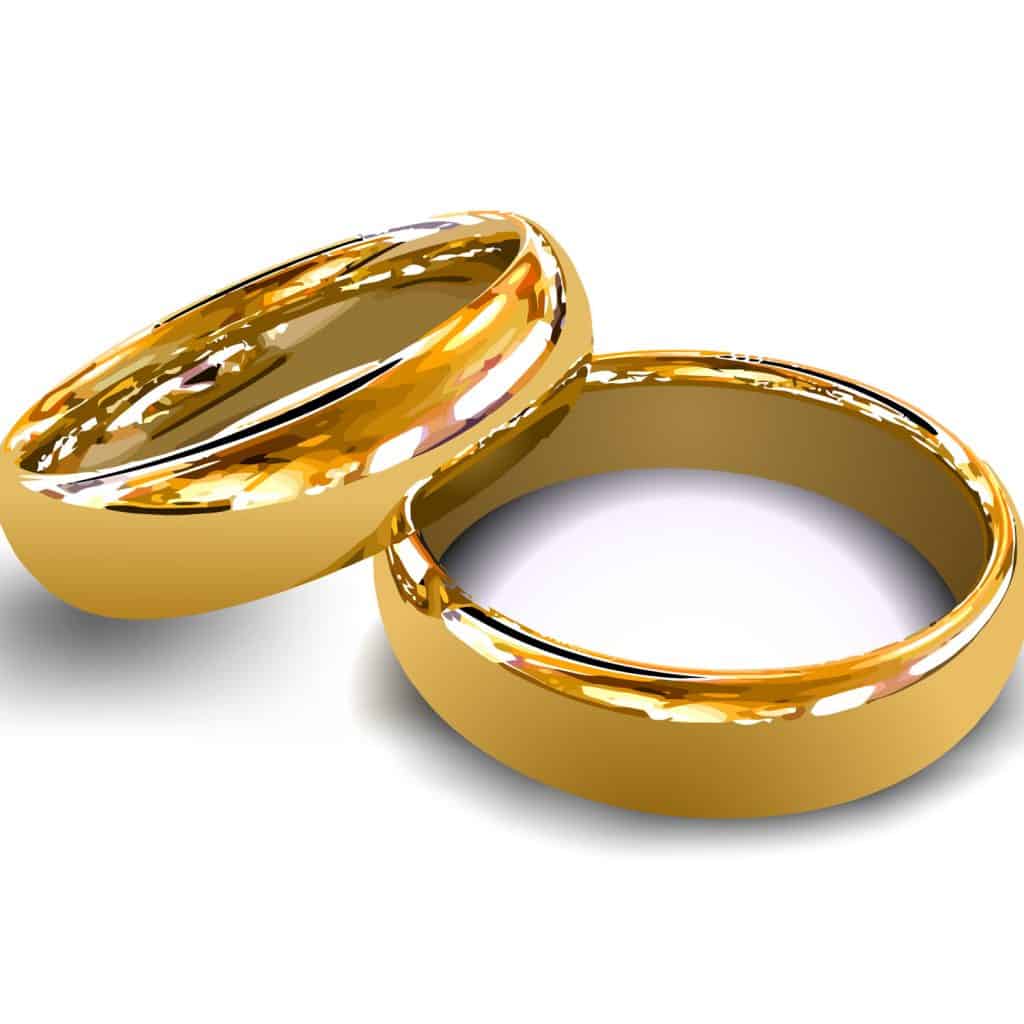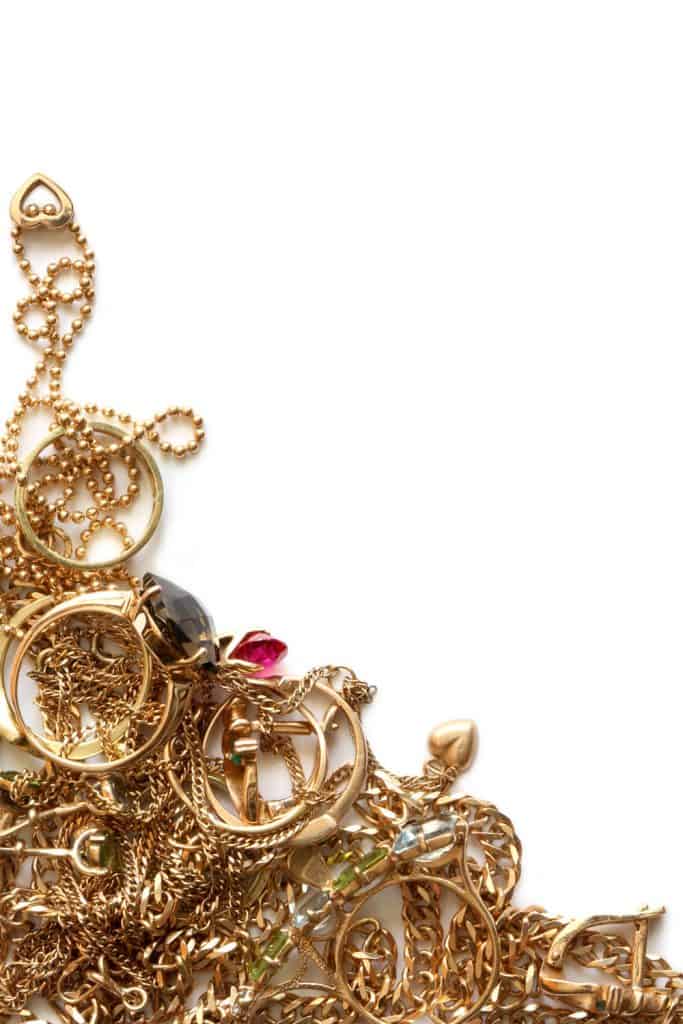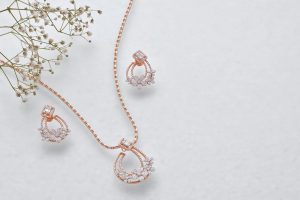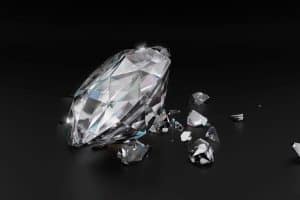Gold is the epitome of luxury and style, and a gold ring is the perfect symbol of love and commitment.
Whether it's a simple wedding band or a glittering diamond engagement ring, the weight of the gold in the ring is a key factor in its price and beauty.
But how much gold is actually in a ring?
In this article, we'll delve into the typical weights of gold in wedding bands and explore the various factors that influence the grams of gold used in a ring.
So, let's get ready to strike gold and learn everything there is to know about the weight of gold in a ring!
Wedding bands can come in a variety of sizes and weights.
The average gold wedding band weighs anywhere from 1 to 9 grams.
When you have additional features on your ring, such as precious stones or metals, it can also change your ring's weight.
How to Choose A gold Ring
Shopping for a wedding band can be an exciting and emotional journey.
However, to make sure you get the best value for your investment, it's important to understand the weight and gold percentage of the ring you're considering.
Don't just settle for any ring - know what you're paying for!
Whether it's a classic, timeless design or a more intricate piece with precious stones, discovering the factors that impact its weight and gold percentage will give you peace of mind and confidence in your purchase.
Keep reading to uncover the secrets behind weighing gold and what makes each ring unique in its value.
![A golden ring encrusted with diamonds, How Many Grams Of Gold In A Ring [Typical Weights For Wedding Bands]](https://stylecheer.com/wp-content/uploads/2020/12/How-Many-Grams-Of-Gold-In-A-Ring-Typical-Weights-For-Wedding-Bands-683x1024.png)
This article may include affiliate links and elements that were carefully created by our team using advanced ai to help you envision the best style advice.
Size Of Wedding Ring
When it comes to wedding rings, it all comes down to personal preferences.
Some choose lighter and thinner rings, whereas others tend to go for bulkier and heavier rings.
Most jewelers categorize the weight of their rings as light, medium, or heavy, with heavy rings typically being the most expensive.
A wedding ring's size plays a big part in how heavy the ring will be, as smaller rings require less metal to create, and larger ones require more.
As mentioned previously, gems and precious stone inlays can also add to the weight of the wedding ring. Here are the three basic factors that play a part in a ring's sizing and weight:
- Ring Width
- Ring Thickness
- Ring Material
Ring Width
The ring's width refers to how thick the band is, and it measures the highest point of the ring's band to the lowest point.
Ring width is the thickness of the band.
They measure it at the highest point of the band.
Jewelers call this lightweight (1.3mm), medium-weight (1.7mm), and heavyweight (2.1mm).
Lightweight
Lightweight rings, which are a popular choice for wedding bands, are typically around 1.3mm thick.
They are generally slim looking and are the most cost-effective option.
Medium weight
Medium-weight rings are incredibly popular and have a typical depth of 1.7mm. They're neither too light nor too heavy.
Medium is the standard ring size. This ring type suits engagement rings and wedding bands.
Heavyweight
Most men's rings fall into this category as they generally have larger fingers and usually prefer wider bands.
The depths of these rings usually average around 2.1mm or more.
They feel solid to the touch and will typically be more expensive, especially if they include precious stones.
Ring Thickness
People usually choose their ring size based on the size of their hands.
If you have a small hand, you're likely to opt for a 2mm or 3mm ring to avoid weighing your hand down.
If you have larger hands, a 4mm to 6mm gold wedding band may feel more stable.
There is no right or wrong when it comes to choosing the thickness of your ring. It's really just a matter of preference.

Ring Material
A gold ring can include other metals as part of its design or help it become more stable.
Combining it with heavier metals increases the overall weight of the ring.
Subsequently, if combined with lighter-weight metals, its overall weight will increase, but it may be less significant.
Gold has a density of anywhere from 13 to 17 grams, depending on the karat.
Here are the most common metals often used as alloys to help make gold rings with their respective density (measured in grams):
- Titanium - 4.5
- Stainless Steel - 7.5
- Sterling Silver - 10.2
- Palladium - 12.0
- Platinum- 19.1
How can you tell how many grams of gold are in a ring?
The first thing you would need to do is determine the weight of your jewelry in grams.
You can use a food scale to get this figure.
You'll also need to know the purity of the ring. This is determined by the karat.
The most common karats are 14-karat (58% purity), 18-karat (75% purity), 20-karat (83% purity), and 24-karat (100% purity).
Next, multiply the weight of your ring by its purity.
For example, if you have an 18-carat ring that weighs 3 grams, you multiply 75 by 3 to come up with 2.25 grams.


Is all gold the same color?
Yes and no.
Pure gold (24-karat gold) is a natural element, and its natural color is a rich yellow hue.
However, when mixed with other metal metals and alloys, it will change its color, which creates different types of "gold colors."
The most common types of gold colors are white gold, rose gold, and yellow gold.
In terms of weight, these gold types will have varying weights depending on the additional metals added to them (except for pure yellow gold).
Let's take a closer look at the characteristics and pros and cons of each gold color.
Yellow Gold

Yellow gold jewelry is typically mixed with copper to make it more stable and durable. It's the most commonly used form of gold for a variety of applications.
Pros
- It is very hypoallergenic and typically the safest gold to wear.
- The purest type of gold that you can buy.
- It will always be in demand.
- Can be matched with diamonds with both higher and lower color grades.
- It is very malleable, which makes it easy for jewelers to create custom designs.
- The most popular type of gold used for wedding ceremonies, jewelry, and interior home furniture.
Cons
- It can be expensive, depending on the grade.
- It is softer than other metals.
- It needs to be cleaned and polished regularly to maintain its shine and luster.
- Can easily acquire scratches and dents from improper handling
White Gold
White gold is the second most popular type of gold type purchased for jewelry.
Unlike yellow gold, which usually contains copper, white gold is usually bonded with alloys such as silver, nickel, and palladium, which give it its silverish color.
And similar to yellow gold, these alloys are used to help increase the durability of the jewelry.
The cost of white gold jewelry runs close to yellow gold jewelry though it may be a bit less expensive.
Pros
- It may be more affordable than yellow gold, depending on its karat.
- It is growing in popularity and may even surpass yellow gold at some point.
- It can be easily bonded with other metals to make it scratch-resistant and more durable.
- It complements white diamonds better than yellow gold.
- It is often mistaken for platinum jewelry, but it is way less expensive.
Cons
- Unlike yellow gold, it is not hypoallergenic.
- Typically has a rhodium plating that must be dipped every two to five years to help it retain its luster and color.
- Often contains alloy nickel, which can cause allergic reactions in some people.
- Can be just as expensive as yellow gold, especially karats of 18 or higher
Rose Gold
Rose gold may not be as popular as yellow or white gold, but it is also worth taking a look at it if you are looking for a wedding band that stands out.
It is comprised of silver alloys, copper, and typical yellow gold, giving it its pinkish hue.
As with silver and yellow gold, these alloys are added to strengthen it and make it more durable.
Most rose gold contains about 25% copper, and the more copper and contains, the redder the gold will appear.
Pros
- Rose gold does not tarnish or stain.
- It is a popular choice for both women's and men's wedding bands.
- It is typically more affordable than other types of wedding bands due to its copper content.
- It is one of the most durable types of gold that you can purchase, thanks to the strength of the compound that it contains--rose gold is stronger than both yellow and white gold.
Cons
- Similar to other types of gold, rose gold needs to be cleaned and polished regularly.
- Depending on the alloy used to make the gold, rose gold may cause allergic reactions in some people.
- It is not as well-known as white and yellow gold and may often be viewed as "cheap" gold.
How much does an 18k gold ring weigh? [grams]
The weight of an 18-karat gold rain will depend on its size and design. Most 18-karat gold rings weigh anywhere from 3 to 6 grams.
How much does a 14k gold ring weigh? [grams]
Like other gold karats, the weight of a 14-karat gold rain will depend on its size and design. Most 14-karat gold rings weigh anywhere from 3 to 6 grams.
Wrapping Things Up
The weight of a gold ring will depend on a few factors, including its width, size, thickness, and the addition of any precious stones.
Gold jewelry can be combined with several metals to increase its durability and change its color.
If you are considering buying a new wedding band, it's helpful to ask about the band's karat and the other metals that it may contain.
On the flip side, are you thinking of selling gold? Take a look at these tips from ABCNews.
Before you go, be sure to check out our other posts:



